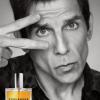Free Radic Biol Med. 2008 May 17.
Small molecular antioxidants effectively protect from PUVA-induced oxidative stress responses underlying fibroblast senescence and photoaging.
Briganti S, Wlaschek M, Hinrichs C, Bellei B, Flori E, Treiber N, Iben S, Picardo M, Scharffetter-Kochanek K. Cutaneous Physiopathology Laboratory, San Gallicano Dermatology Institute, Rome, Italy.
Exposure of human fibroblasts to 8-methoxypsoralen plus ultraviolet-A irradiation (PUVA) results in stress-induced cellular senescence in fibroblasts. We here studied the role of the antioxidant defense system in the accumulation of reactive oxygen species (ROS) and the effect of the antioxidants alpha-tocopherol, N-acetylcysteine, and alpha-lipoic acid on PUVA-induced cellular senescence. PUVA treatment induced an immediate and increasing generation of intracellular ROS. Supplementation of PUVA-treated fibroblasts with alpha-tocopherol (alpha-Toc), N-acetylcysteine (NAC), or alpha-lipoic acid (alpha-LA) abrogated the increased ROS generation and rescued fibroblasts from the ROS-dependent changes into the cellular senescence phenotype, such as cytoplasmic enlargement, enhanced expression of senescence-associated-beta-galactosidase and matrix-metalloproteinase-1, hallmarks of photoaging and intrinsic aging. PUVA treatment disrupted the integrity of cellular membranes and impaired homeostasis and function of the cellular antioxidant system with a significant decrease in glutathione and hydrogen peroxide-detoxifying enzymes activities. Supplementation with NAC, alpha-LA, and alpha-Toc counteracted these changes. Our data provide causal evidence that (i) oxidative stress due to an imbalance in the overall cellular antioxidant capacity contributes to the induction and maintenance of the PUVA-induced fibroblast senescence and that (ii) low molecular antioxidants protect effectively against these deleterious alterations.

Antioxidants effectively protect against UVA-induced oxidative stress
#1
Posted 22 June 2008 - 10:32 AM
#2
Posted 22 June 2008 - 02:37 PM
Found this article the other day:
http://www.ingentaco...000005/art00025
Topical N-Acetyl Cysteine and Genistein Prevent Ultraviolet-Light-Induced Signaling That Leads to Photoaging in Human Skin in vivo
Authors: Kang, Sewon; Chung, Jin Ho; Lee, Joo Heung; Fisher, Gary J.; Wan, Yian Sheng; Duell, Elizabeth A.; Voorhees, John J.
Source: Journal of Investigative Dermatology, Volume 120, Number 5, May 2003 , pp. 835-841(7)
Abstract:
CM8ShowAd("Skyscraper"); Human skin is exposed to solar ultraviolet radiation. Ultraviolet radiation damages human skin and results in an old and wrinkled appearance, called photoaging. We have previously reported that molecular mechanisms by which ultraviolet light causes photoaging involve activation of growth factor and cytokine receptors in keratinocytes and dermal cells. They lead to downstream signal transduction through activation of mitogen-activated protein kinase (extracellular signal-regulated kinase, c-jun N-terminal protein kinase, and p38) pathways. These signaling pathways converge in the nucleus of cells to form an activated complex of transcription factor activator protein 1 (cFos/cJun), which induces matrix metalloproteinases that degrade skin connective tissue. In addition to cell surface receptor activation, generation of reactive oxygen species by ultraviolet radiation is believed to be critical in triggering mitogen-activated protein kinase pathways. We investigated the ability of (i) ultraviolet irradiation to generate reactive oxygen species in human skin in vivo; and (ii) genistein, which possesses both tyrosine kinase inhibitory and antioxidant activities, and n-acetyl cysteine, which can be converted into the endogenous antioxidant glutathione, to impair responses to ultraviolet light that eventuate in photoaging in human skin in vivo. Ultraviolet irradiation caused a rapid and significant increase in hydrogen peroxide levels in human skin in vivo. Pretreatment of human skin with genistein inhibited ultraviolet-induced epidermal growth factor receptor tyrosine kinase activity, whereas n-acetyl cysteine did not. Genistein inhibited ultraviolet induction of both extracellular signal-regulated kinase and cJun N-terminal protein kinase activities. n-Acetyl cysteine inhibited extracellular signal-regulated kinase but not cJun N-terminal protein kinase activation. Both genistein and n-acetyl cysteine prevented ultraviolet induction of cJun protein. Consistent with this, genistein and n-acetyl cysteine blocked ultraviolet induction of cJun-driven enzyme, collagenase. Neither genistein nor n-acetyl cysteine acted as sunscreens as they had no effect on ultraviolet-induced erythema. These data indicate that compounds similar to genistein and n-acetyl cysteine, which possess tyrosine kinase inhibitory and/or antioxidant activities, may prevent photoaging.
Free Radic Biol Med. 2008 May 17.
Small molecular antioxidants effectively protect from PUVA-induced oxidative stress responses underlying fibroblast senescence and photoaging.
Briganti S, Wlaschek M, Hinrichs C, Bellei B, Flori E, Treiber N, Iben S, Picardo M, Scharffetter-Kochanek K. Cutaneous Physiopathology Laboratory, San Gallicano Dermatology Institute, Rome, Italy.
Exposure of human fibroblasts to 8-methoxypsoralen plus ultraviolet-A irradiation (PUVA) results in stress-induced cellular senescence in fibroblasts. We here studied the role of the antioxidant defense system in the accumulation of reactive oxygen species (ROS) and the effect of the antioxidants alpha-tocopherol, N-acetylcysteine, and alpha-lipoic acid on PUVA-induced cellular senescence. PUVA treatment induced an immediate and increasing generation of intracellular ROS. Supplementation of PUVA-treated fibroblasts with alpha-tocopherol (alpha-Toc), N-acetylcysteine (NAC), or alpha-lipoic acid (alpha-LA) abrogated the increased ROS generation and rescued fibroblasts from the ROS-dependent changes into the cellular senescence phenotype, such as cytoplasmic enlargement, enhanced expression of senescence-associated-beta-galactosidase and matrix-metalloproteinase-1, hallmarks of photoaging and intrinsic aging. PUVA treatment disrupted the integrity of cellular membranes and impaired homeostasis and function of the cellular antioxidant system with a significant decrease in glutathione and hydrogen peroxide-detoxifying enzymes activities. Supplementation with NAC, alpha-LA, and alpha-Toc counteracted these changes. Our data provide causal evidence that (i) oxidative stress due to an imbalance in the overall cellular antioxidant capacity contributes to the induction and maintenance of the PUVA-induced fibroblast senescence and that (ii) low molecular antioxidants protect effectively against these deleterious alterations.
Edited by Eva Victoria, 22 June 2008 - 02:40 PM.
#3
Posted 22 June 2008 - 04:33 PM
Thank you both for sharing, I think basic experimental science like this is vital to further the understanding of prevention and repair of photodamage.
Edited by Fredrik, 22 June 2008 - 06:48 PM.
#4
Posted 23 June 2008 - 09:37 AM
L-Ergothioneine scavenges superoxide and singlet oxygen and suppresses TNF-alpha and MMP-1 expression in UV-irradiated human dermal fibroblasts.
Obayashi K, Kurihara K, Okano Y, Masaki H, Yarosh DB.Cosmos Technical Center Co. Ltd., 3-24-3, Hasune, Itabashi-ku, Tokyo, 174-0046, Japan.
Ergothioneine (EGT) is a sulfur-containing amino acid, and is presumed to function as a natural antioxidant. The purpose of this study was to identify the nature of the antioxidant activity and investigate the effects of EGT on UV-induced cellular response. In chemical studies, EGT scavenged the superoxide anion radical (*O(2)(-)) and singlet oxygen ((1)O(2)). In cultured fibroblasts, EGT suppressed TNF-alpha up-regulation by UVB irradiation. In addition, in fibroblasts exposed to UV-A, EGT suppressed the expression of matrix metalloproteinase 1 (MMP-1) protein by nearly 50% and reduced MMP-1 mRNA expression. From these results, we conclude that EGT scavenges reactive oxygen species generated by both Type I and Type II photosensitization and suppresses both TNF-alpha expression and MMP-1 at their transcriptional level. EGT may reduce skin anti-aging effects after UV irradiation by the scavenging of *O(2)(-) and (1)O(2), and reducing signals for protease and inflammatory activity.
PMID: 15744438 [PubMed - indexed for MEDLINE]
#5
Posted 23 June 2008 - 09:43 AM
A comparison of the relative antioxidant potency of L-ergothioneine and idebenone.
Dong KK, Damaghi N, Kibitel J, Canning MT, Smiles KA, Yarosh DB.AGI Dermatics, Freeport, NY, USA. kdong@agiderm.com
BACKGROUND: L-ergothioneine (EGT) is a stable antioxidant found in food plants as well as in animal tissue undergoing relatively high levels of oxidative stress. Idebenone is a stable analog of the antioxidant coenzyme Q(10). All are potent antioxidants found in skincare products, but their relative potencies are not well described. AIMS: To establish the physiological relevance of EGT by examining transcription of the EGT transporter gene OCTN-1 and production of the receptor protein in skin fibroblasts. In addition, to compare the inhibition of lipid peroxide formation by coenzyme Q(10) and EGT. Furthermore, to compare the peroxide-scavenging abilities of EGT and idebenone in both simple solution and in cell cultures exposed to ultraviolet A (UVA). METHODS: OCTN-1 expression and production in cultured fibroblasts were measured through real-time reverse transcription-PCR and Western blotting, respectively. Alloxan-induced lipid peroxidation in liposomes was used to evaluate the inhibition of lipid peroxide formation. The abilities of EGT and idebenone to directly scavenge hydroxyl radicals produced by H(2)O(2 )were determined. Finally, we irradiated fibroblasts with UVA340 radiation and compared antioxidant capabilities to scavenge free radicals. RESULTS: We found that OCTN-1 is expressed and readily detectable in cultured human fibroblasts. EGT was more efficient in inhibiting lipid peroxide formation than coenzyme Q(10) or idebenone. Samples treated with EGT had significantly less peroxide than those treated with idebenone 120 min after adding the antioxidants to H(2)O(2). EGT acted significantly quicker and more efficiently in capturing reactive oxygen species (ROS) after UVA340 irradiation. CONCLUSIONS: EGT is a natural skin antioxidant, as evidenced by the presence of the EGT transporter in fibroblasts. EGT is a more powerful antioxidant than either coenzyme Q(10) or idebenone due to its relatively greater efficiency in directly scavenging free radicals and in protecting cells from UV-induced ROS.
PMID: 17760697 [PubMed - indexed for MEDLINE]
BTW does any one use any of the Remergent products created by one of the researchers from article Dr. Yarosh??? He uses L-ergothioneine in his products along with enzymes to repair damaged DNA from photoaging. There seems to be a lot of support to back up the claims.
1 user(s) are reading this topic
0 members, 1 guests, 0 anonymous users











































